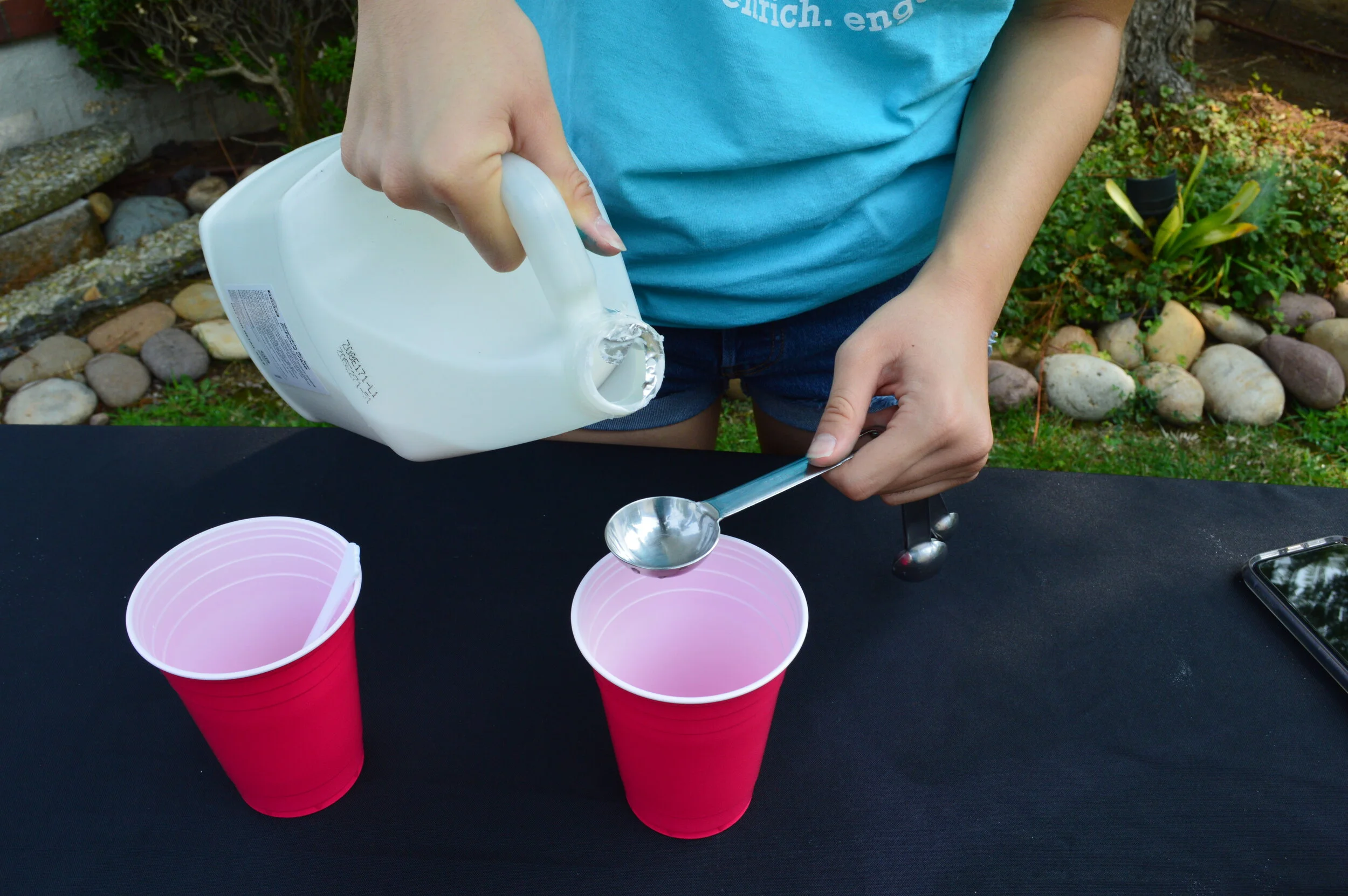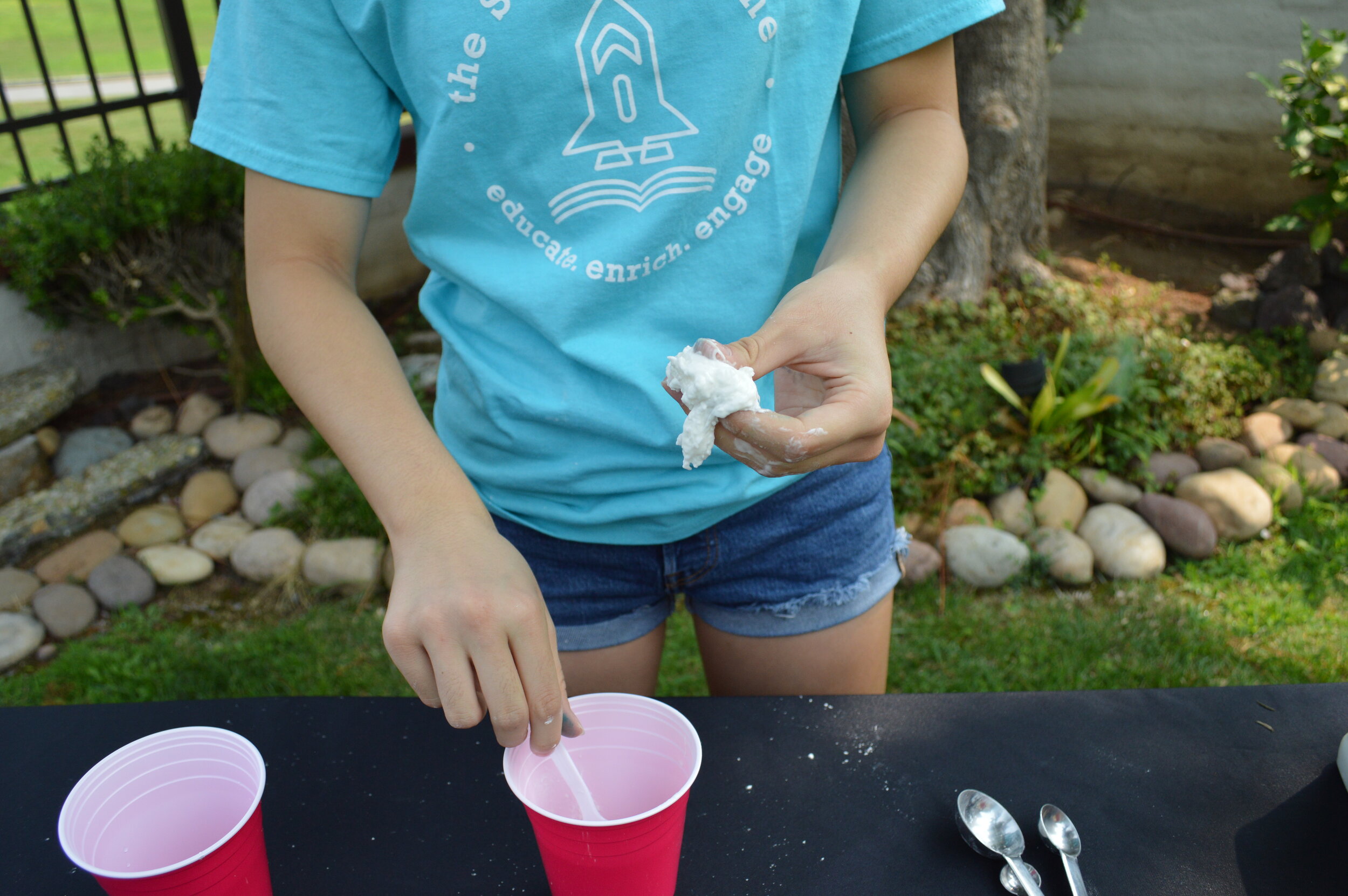Bouncy Balls
Become a mad scientist as you experiment to make the highest bouncing ball! (Duration: 8 minutes)
Standards included in this lesson: 2-PS1-1, 5-PS1-4, CCSS.Math.2.MD.A.3
Materials
Borax
Warm water
Glue (clear or white)
Plastic spoon
A mixing cup
Optional: glitter, food coloring
Procedure
Gather your materials. WARNING: Borax may be harmful if not used correctly. Make sure that it is completely dissolved in the water. If you have sensitive skin, wear gloves. Make sure to wash hands thoroughly when done dealing with the Borax.
Step 1
Mix ½ a cup of warm water with 1 tablespoon of borax powder in a cup until the borax is completely invisible. Wait until the water cools.
Step 2
Optional: In a new cup, make your own glue creation using a few drops of food coloring or a sprinkle of glitter. This will make your bouncy ball look different!
Step 3
Pour as much glue as you want into the borax/water mixture. The more glue you pour in, the bigger the ball!
Step 4
Stir the glue in the mix for a few seconds then take it out and use your hands to squish the ball. If it is too soft, dip it in the borax and use your hands to mix the borax into the glue.
Step 5
When it is no longer sticky, roll it into a ball shape.
Step 6
Now try throwing it on the ground and watch how high it goes! Does how hard you throw affect how high your ball bounces?
Science Explanation
Kindergarten - 2nd Grade . . .
- Glue is made up of tiny things called polymers. Polymers are long strands that are super sticky and stretchy. This is what makes glue stick things together! When glue mixes with borax it causes the glue to get harder.
- The borax links the polymers of glue together. It is like if you hold hands with friends! You are connected and cannot move without each other. The borax makes the polymers of glue stay together and this makes the glue become harder and more firm. When the glue becomes super hard and you roll it into a ball, it will stay in a ball shape! When you throw it on the ground, it will bounce back up at you. What is something else that will bounce when you throw it at the ground? (answers: basketball, soccer ball, etc)
- What does the ball feel like? Is it sticky? How is that different from the glue? 2-PS1-1
3rd Grade - 5th Grade . . .
- To make the bouncy ball, the borax had to make the glue hard so that it would bounce. To do that it would have to go through a reaction. A reaction is when something happens to one or more substances to change things about it such as how it looks, how it acts, and more.
- The glue is made up of polymers, which are long strands that you can think of like trains. It has many molecules (a very, very small unit), which are like the cars on the train, and they are linked together. Like trains can slide past each other on the train tracks, polymers can slide past each other making it act like a liquid!
- Borax is made up of molecules too! Borax molecules are different from the glue ones. These molecules, when added to glue, can link only two glue polymers together. Borax molecules are like a rope tying two trains together, so that the trains can only move with each other and can not slide past each other like before.
- When a lot of borax molecules and glue polymers are mixed, guess what happens to the glue polymers? All of them become connected and the glue can not move like a liquid anymore. The glue becomes harder and when you shape it into a ball and throw it on the floor, it will bounce back at you! 5-PS1-4
- Do you think more borax or less borax will give a bouncier ball? (answer: more borax because the ball will be harder and more solid)
- Change up the experiment! Try different amounts of glue and borax or use different types of glue and see which one makes the bounciest ball!
Math Extensions
2nd Grade . . .
- How high do you think your ball went? Estimate the height in feet or meters.
- CCSS.Math.Content.2.MD.A.3
Written by Allyson Liu Inspired by: Life's Carousel






